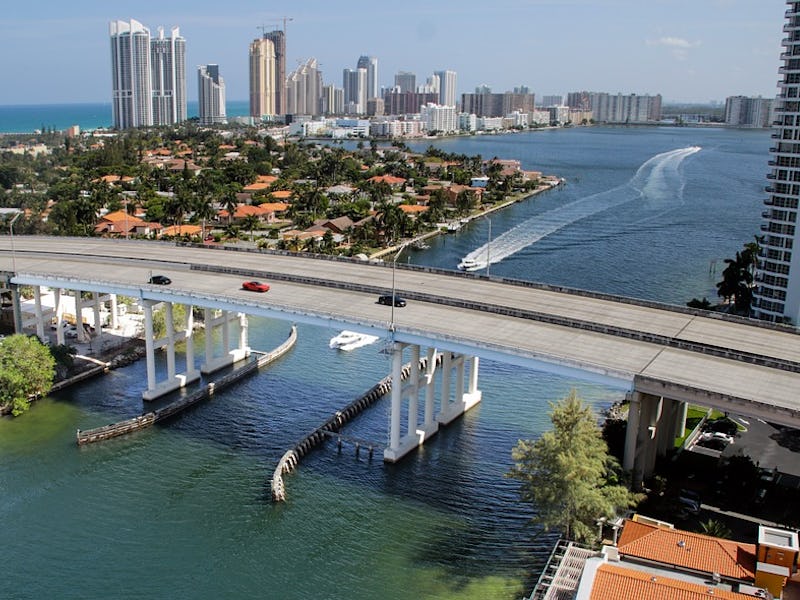Climate Change Report Describes How Screwed Miami Will Be In 30 Years
The sunshine state is about to get a whole lot wetter.

While hurricanes or volcanic eruptions inflict an immediate blow, the Earth’s rising sea levels wreak disaster at a slower, more sinister pace. Driven by melting ice sheets and the expansion of warming sea water, rising sea levels are threatening both life and property on 13,000 miles of United States coastline. Now, a new report from the Union of Concerned Scientists reveals which state is going to go under first.
The prediction that Florida will be massively affected by climate change isn’t a new one. But this report, released Monday, lays out what it will mean for the everyday lives of Floridians. Within the next 30 years, the report reveals, residents of roughly 64,000 homes in Florida will have to deal with chronic flooding, and half of those homes will be in South Florida.
Tidal flooding in Miami in 2016.
About 12,000 of those homes belong to Miami residents. The new prediction is in line with a National Oceanic and Atmospheric Administration (NOAA) report released in February, which predicted that, by 2070, Miami streets will flood every single day.
That is, unless the city can fight back against the rising seas. In 2017, Miami residents voted in favor of a $400 million “Miami Forever” bond, which included $192 million for measures to protect the city. In May, the Miami Herald editorial board pointed out this change couldn’t come soon enough, writing: “Our main protection is a flood-control system built 50 to 70 years ago, long before climate change was even imagined.”
The new report combines data on existing properties provided by the online real estate company Zillow and localized projections of three different sea level rise scenarios developed for the 2014 National Climate Assessment. Using this data, the researchers identified residential and commercial properties at risk of chronic, sea level inundation, which they defined as experiencing at least 26 floods per year.
Florida’s imminent experience of climate change will be a glimpse into the future of the rest of the country. The findings indicate that “sea level rise, driven primarily by climate change and even absent heavy rain or storms, puts more than 300,000 of today’s homes and commercial properties in the contiguous United States at risk of chronic, disruptive flooding within the next 30 years.”
That’s a dangerous and expensive problem. The cumulative current value of the properties that will be at risk in 2045 is estimated at $136 billion — which is a new kind of housing crisis. Taxes, in turn, are predicted to rise as city’s attempt to hold back the effects of flooding. In its coverage of the report, the Miami Herald points out that by 2030, Miami Beach homes could be paying $17 million in property taxes to face regular flooding — but by 2100, that could jump to more than $760 million.
But long before that happens, the report authors write, “millions of Americans living in coastal communities will face more frequent flooding, as the the tides inch higher and reach farther inland.” If coastal cities are to survive, they argue, municipal, county, and federal action needs to happen now.